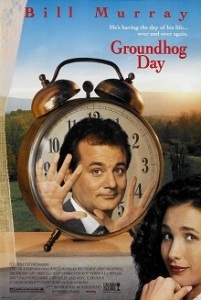Atomic Clock ‘Glitch’ Sends Earth Back to January 1, 2023
Washington, D.C., January 1, 2023, Star-Gazer News Service
While TV viewers watching last night’s New Year’s Eve celebration in Times Square weren’t allowed to see it, at the stroke of midnight, the world cycled back to January 1, 2023. Officials urged people to stay calm while the software of the Atomic Clock was checked for evidence of hackers.
According to Time Tsar James Maxwell, “Clock time is independent of historical events. It would be premature at this point to speculate on whether or not we will relive the events of 2023 or if we will experience something new.”
 Atomic Clock HQ
James Clerk Maxwell, “Clock time is independent of historical events. It would be premature at this point to speculate on whether or not we will relive the events of 2023 or if we will experience new events with year-old dates.”
Atomic Clock HQ
James Clerk Maxwell, “Clock time is independent of historical events. It would be premature at this point to speculate on whether or not we will relive the events of 2023 or if we will experience new events with year-old dates.”According to informed sources, the International Earth Rotation and Reference Systems Service (IERS) that mandates when “leap seconds” are added to the official time to synchronize the earth’s rotation with with the official time, 20234 is a leap year. However, that does not mean IERS is considering adding an entire year to the clock to bring time up to what everyday people think the world’s date and time should be.
“That would be unprecedented,” said Maxwell.
Observers at IERS and the Atomic Clock HQ are closely monitoring events and are “happy to report that so far the world is not seeing a replay of the opening days of 2023.”
Joe Smith, the janitor at HQ said, that Wikipedia is correct when it reports that, “In 1968, the duration of the second was defined to be 9192631770 vibrations of the unperturbed ground-state hyperfine transition frequency of the caesium-133 atom. Prior to that, it was defined by there being 31556925.9747 seconds in the tropical year 1900. The 1968 definition was updated in 2019 to reflect the new definitions of the ampere, kelvin, kilogram, and mole decided upon at the 2019 redefinition of the International System of Units. Timekeeping researchers are currently working on developing an even more stable atomic reference for the second, with a plan to find a more precise definition of the second as atomic clocks improve based on optical clocks or the Rydberg constant around 2030.”
“Most kids learn this math in grade school,” said Smith, “so they can keep track of time on their cell phones all of which stubbornly maintain this is 2023 all over again.”
 According to Sue Campbell, head of the National Institute of Standards and Technology, people are encouraged to report deja view experiences that suggest events from 2023 are repeating themselves. “Until we sort this out, many of us will be experiencing the movie ‘Groundhog Day.'”
According to Sue Campbell, head of the National Institute of Standards and Technology, people are encouraged to report deja view experiences that suggest events from 2023 are repeating themselves. “Until we sort this out, many of us will be experiencing the movie ‘Groundhog Day.'”
“Audiences enjoyed watching the movie,” said Maxwell, “so we believe folks will have fun with the strange things happening in the world of time while officials work to discover just when this moment is.”
At the crack of dawn, Congress passed legislation that mandates that all states and U.S. territories will consider the year to be 2024, prohibiting jurisdictions from “rolling their own” about the current date and time.
“Thank goodness there’s no precedent for this,” said Speaker of the House Mike Johnson, “for that would mean time has been off track for years.”
“No worries,” said President Biden, “since quantum scientists say that time is not real.”



